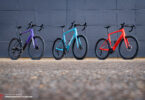Trek Madone SLR 9 Disc – The aero race bike with a damper and disc brakes
The Madone SLR 9 Disc is the latest iteration of Trek’s aerodynamic race bike as it struts onto the scene with disc brakes, elevated comfort, and the brand’s familiar IsoSpeed technology. Here’s everything you need to know about Trek’s newest flagship model.
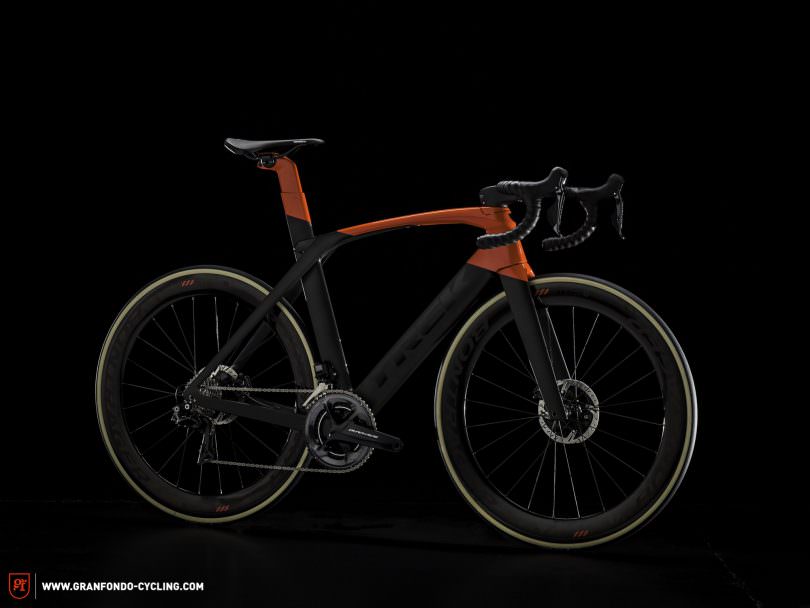
Fittingly for the top dog of the American brand’s stable over the past few years, the Trek Madone SLR 9 Disc has undergone a significant overhaul for MY19. We’re talking new geometry, revised IsoSpeed integration, and disc brakes to name but a few upgrades. Everything points firmly at its intentions to conquer the race bike market and reel in sprint classification points.
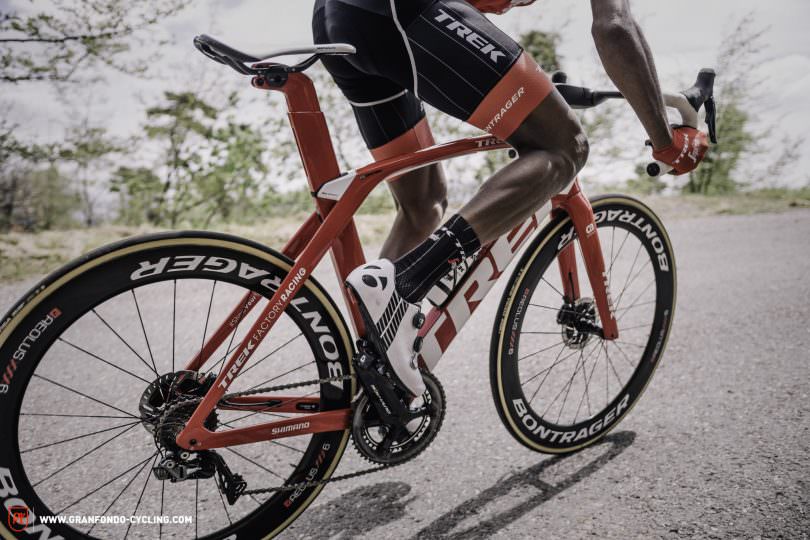
Trek Madone SLR 9 Disc – The aerodynamics
Trek’s ambition in developing the new Madone was to retain the current models’ aerodynamic drag performance while ensuring their bike engineers had sufficient freedom when it comes to integrating new technologies – such as the damper for the IsoSpeed system and making it disc brake compatible. Through extensive wind tunnel testing, they focused on optimising the bike’s aero credentials for an average yaw angle sweep of -12.5° to 12.5°, which they’d calculated as being most relevant for real-world riding. It’s all about the angles that air hits an object (i.e. the rider and the bike), and in the Madone’s case the testing took place with a dummy rider at a speed of 48 km/h. Over the tested 25° yaw average, the updated Madone’s end result is 14 g less than the current model, which achieves Trek’s project goal.
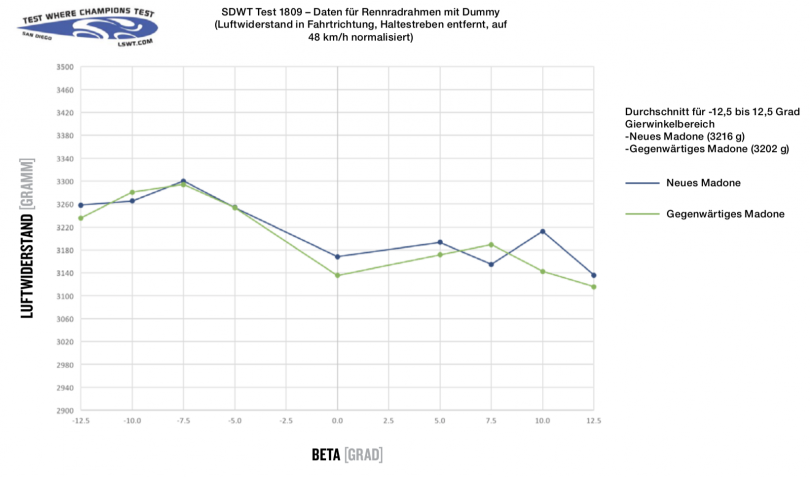
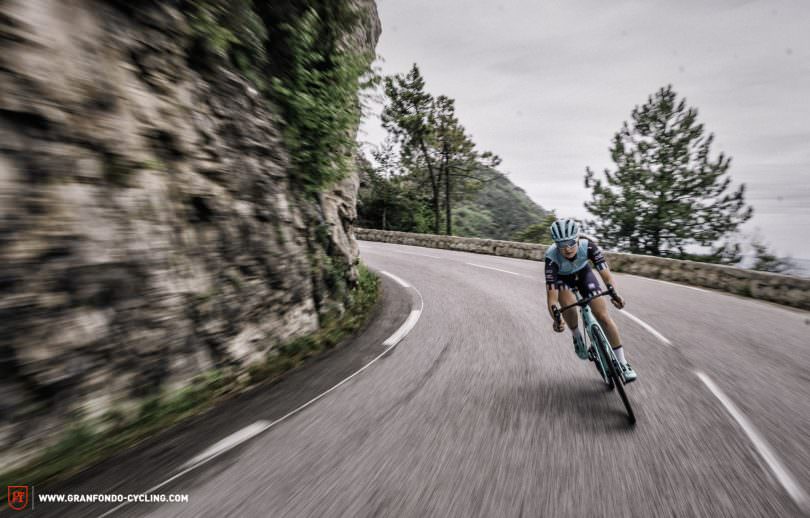
Trek Madone SLR 9 Disc – The weight
Weight ambitions largely reflected those of the aerodynamics: retain the low weight of the previous model while adding new features. The new Madone SLR 9 Disc comes with Adjustable Compliance Technology, a rebound damper for the IsoSpeed technology, and a split bar and stem design. According to Trek, each of these features contributes to an overall improvement in how the bike handles, which improves the ride quality for pros as well as rendering it more accessible to inexperienced riders. Coming in either rim or disc brakes, the rim brake version of the Madone SLR with Dura-Ace Di2 components weighs 7.1 kg – the same as the current model. Depending on the paintjob of your disc brake Madone SLR, it’s in the region of 7.5 kg. The carbon frame and small parts weigh in at a nominal 1.1 kg. (All manufacturer’s own stats).
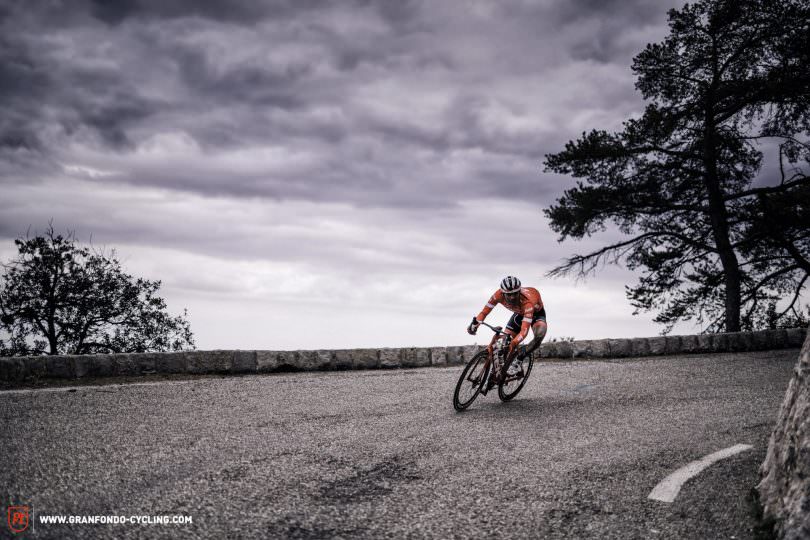
Trek Madone SLR 9 Disc – Adjustable Compliance Technology
Taking cues from lessons learned while developing the Domane SLR, Trek’s team opted to integrate the IsoSpeed technology into the toptube (unlike the position on the Domane SLR) in order to ensure that the bike’s aerodynamics were not compromised in any way. Compliance, according to Trek, now remains exactly the same across all the frame sizes. The IsoSpeed decouples the seatpost from the rest of the frame, and the level of compliance can be adjusted by moving an adjustment slider in a space between two parts of the frame: the further towards the front of the bike, the bigger the gap between the seat mast and the more compliance as the seatpost can deflect more; the tighter the gap, the less deflection and more rigid ride.


The Madone SLR also know features a damper that controls the rebound of the IsoSpeed technology, ensuring that comfort remains tip-top by slowing down the haste with which it returns to the original position. It isn’t going to be as easy to fine-tune as the rebound systems that are common in mountain biking, but it should make a notable impact to comfort.
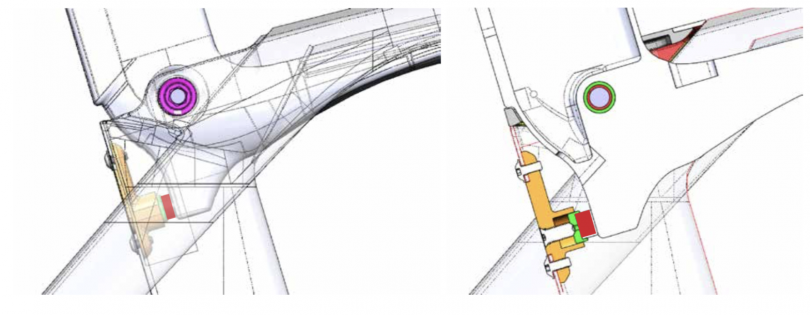
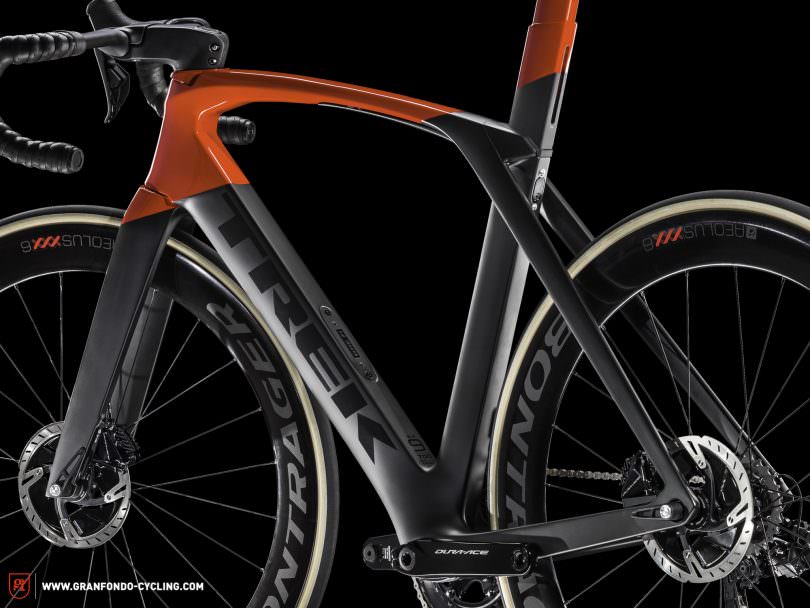
Trek Madone SLR 9 Disc – The geometry
In previous years Trek offered the Madone in both an H1 and an H2 frame with an integrated bar and stem design. Given the nature of an integrated front end, it wasn’t easy for customers to fine-tune their position. Fortunately, the return of a separate bar and stem design means that this is no longer an issue. The familiar H1 (race-bred) and H2 (more traditional) frame options have met in the middle with an H1.5 fit, multiple stem options and the choice of bar dimensions. The bar roll can also be adjusted by +/-5°. The benefits for customers shouldn’t be underestimated here and it reflects Trek’s objective to cater to more tastes. The stems range from 90 to 130 mm in length and -7° to -14° angles. The proprietary bars have widths from 38 cm to 44 cm. Frame sizes range from 50 to 62 cm.
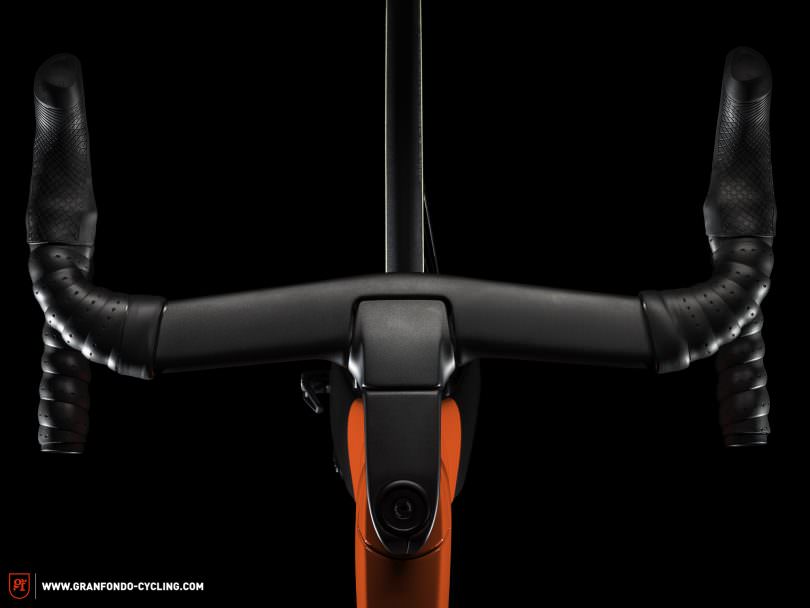

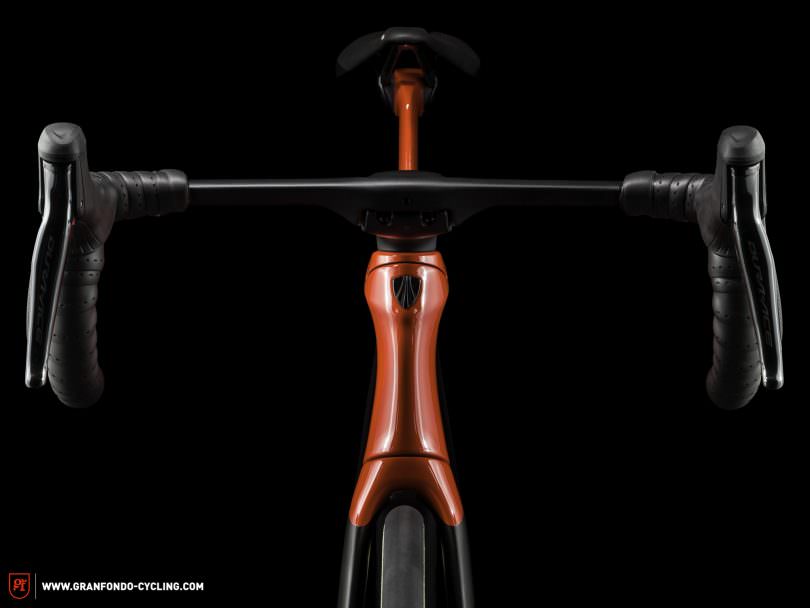
| Size | 500 mm | 520 mm | 540 mm | 560 mm | 580 mm | 600 mm | 620 mm |
|---|---|---|---|---|---|---|---|
| Top tube | 521 mm | 534 mm | 543 mm | 559 mm | 573 mm | 586 mm | 598 mm |
| Seat tube | 453 mm | 483 mm | 496 mm | 525 mm | 553 mm | 573 mm | 593 mm |
| Chainstays | 410 mm | 410 mm | 410 mm | 410 mm | 411 mm | 411 mm | 412 mm |
| Head tube | 111 mm | 121 mm | 131 mm | 151 mm | 171 mm | 191 mm | 211 mm |
| Fork Offset | 45 mm | 45 mm | 45 mm | 40 mm | 40 mm | 40 mm | 40 mm |
| Head angle | 72,1° | 72,8° | 73,0° | 73,5° | 73,8° | 73,9° | 73,9° |
| Seat angle | 74,6° | 74,2° | 73,7° | 73,3° | 73,0° | 72,8° | 72,5° |
| Wheelbase | 974 mm | 977 mm | 981 mm | 983 mm | 992 mm | 1001 mm | 1010 mm |
| Reach | 378 mm | 383 mm | 385 mm | 391 mm | 395 mm | 399 mm | 402 mm |
| Stack | 520 mm | 532 mm | 540 mm | 563 mm | 581 mm | 600 mm | 620 mm |
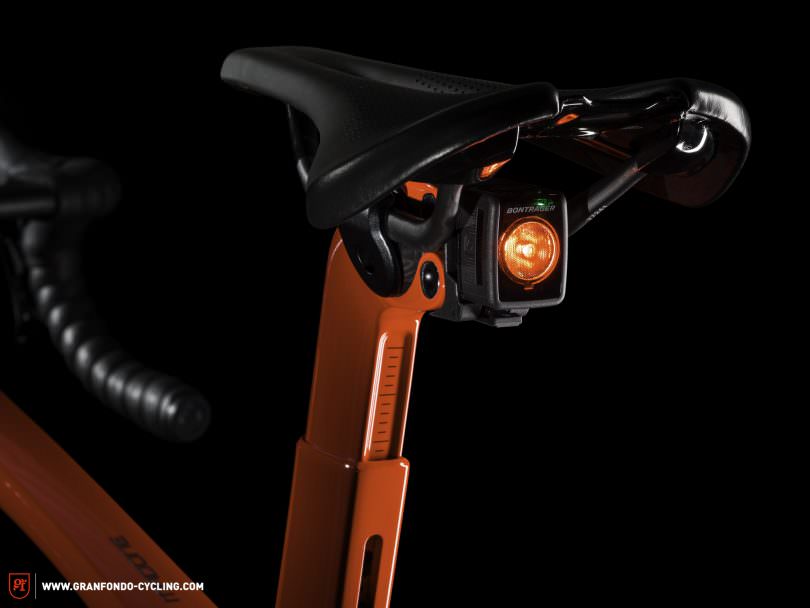

Trek Madone SLR 9 Disc – The spec
The Madone SLR is being launched in both a men’s and a women’s model, whereby certain touchpoints like the saddle, bar width and stem length are optimised for female riders. Right now the new Madone is already out on the roads with both Trek-Segafredo and Trek-Drops. It’s available immediately from Trek retailers too. Project One also extends to this latest rig, and the Madone SLR can be customised in the same manner as their other top bikes – except this time you can even deploy an exclusive Madone ICON paintjob. Expect to pay € 600 on top of the bill if you’re going for a custom paintjob.
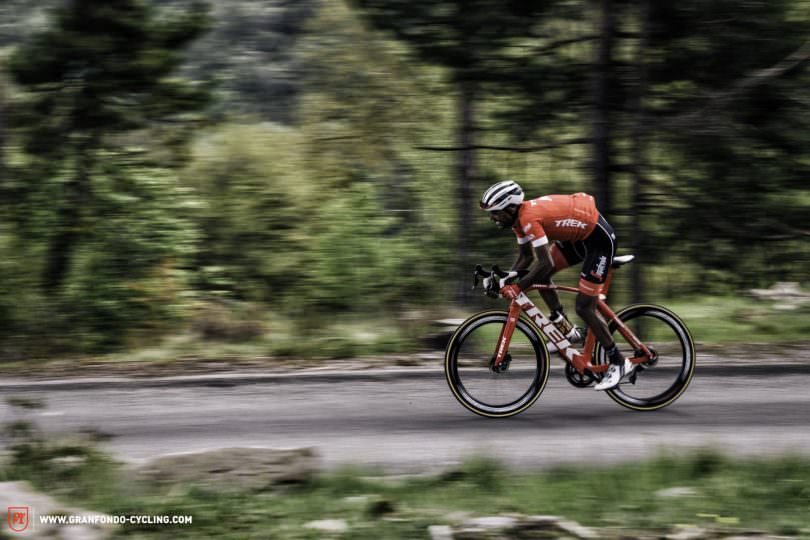
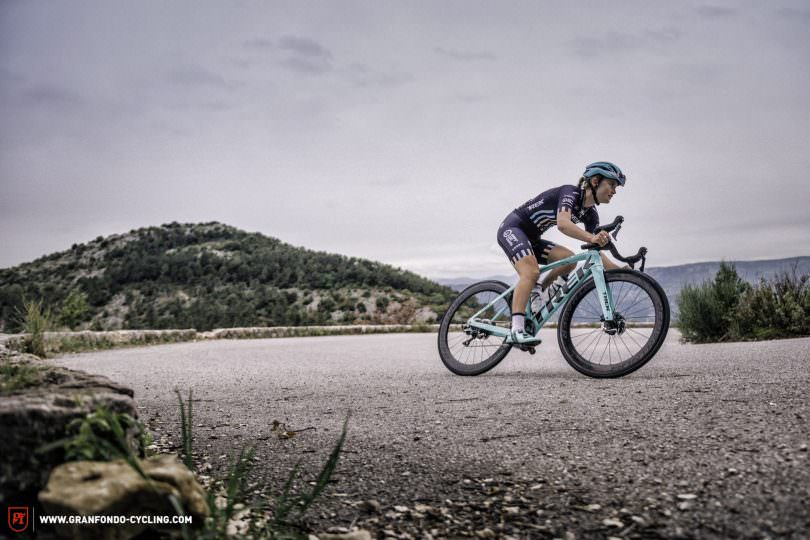
| Modell | Madone SLR 9 Disc | Madone SLR 8 | Madone SLR 6 Disc | Madone SLR 6 Disc Women’s |
|---|---|---|---|---|
| Frame | 700 Series OCLV Carbon, 12 mm Thru-Axle | 700 Series OCLV Carbon, 12 mm Thru-Axle | 700 Series OCLV Carbon, 12 mm Thru-Axle | 700 Series OCLV Carbon, 12 mm Thru-Axle |
| Wheels | Bontrager Aeolus XXX 6 Disc | Bontrager Aeolus Pro 5 | Bontrager Aeolus Comp Disc | Bontrager Aeolus Comp Disc |
| Drivetrain | Shimano DURA-ACE Di2, 50/34, 11–28T | Shimano DURA-ACE mechanisch, 50/34, 11–28T | Shimano Ultegra mechanisch, 50/34, 11–28T | Shimano Ultegra mechanisch, 50/34, 11–28T |
| Brakes | Shimano DURA-ACE Hydraulic Disc, 160/160 mm | Shimano DURA-ACE Felgenbremse | Shimano Ultegra Hydraulic Disc, 160/160 mm | Shimano Ultegra Hydraulic Disc, 160/160 mm |
| Saddle | Bontrager Montrose Pro | Bontrager Montrose Elite | Bontrager Montrose Elite | Bontrager Ajna Elite |
| Tires | Bontrager R4, 700x25c | Bontrager R3, 700x25c | Bontrager R3, 700x25c | Bontrager R3, 700x25c |
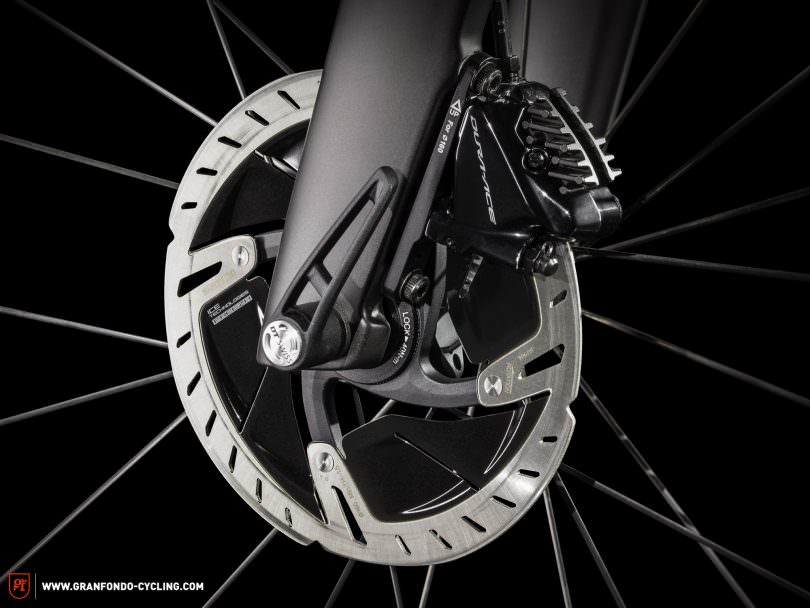
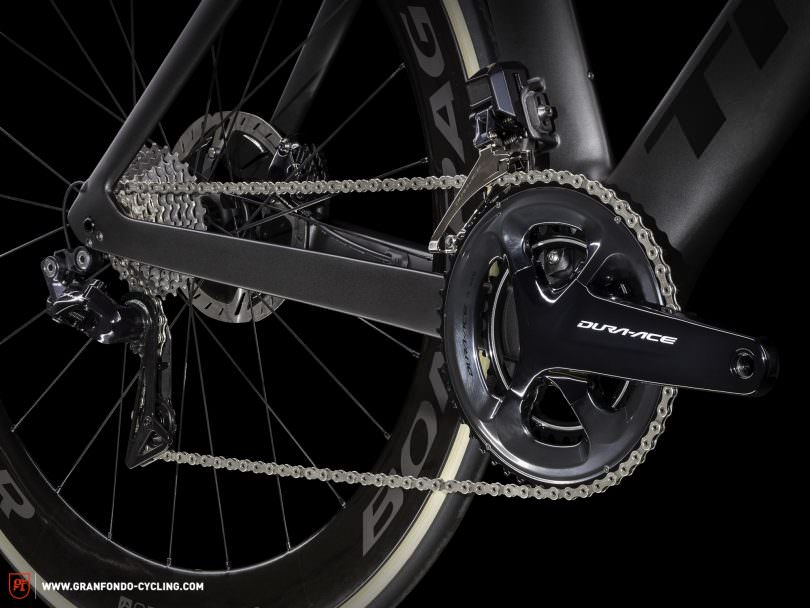
Trek Madone SLR 9 Disc – Conclusion
Redevelopment isn’t always necessary but in the case of the new Madone SLR it’s clear that Trek have honed in on the task with the right attitude. Their approach to further improve the IsoSpeed technology, adopt new geometry and invest in disc brake compatibility testifies to their belief in comfort and safety – even when it comes to an aero race bike. It remains to be seen just how amateur-friendly this bike really is, but stay tuned for an imminent test of the Madone SLR when we’ll pitch it directly against the competition.
For more information head to trekbikes.com
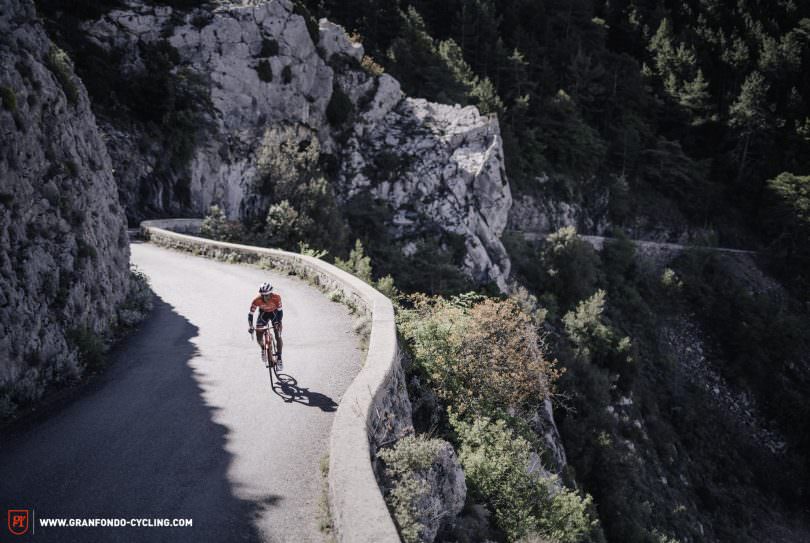
Did you enjoy this article? If so, we would be stoked if you decide to support us with a monthly contribution. By becoming a supporter of GRAN FONDO, you will help secure a sustainable future for high-quality cycling journalism. Click here to learn more.
Words: Photos: Trek PR





